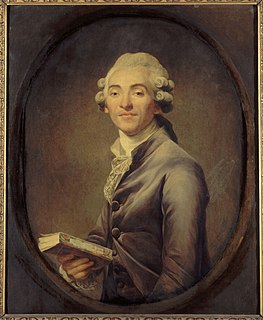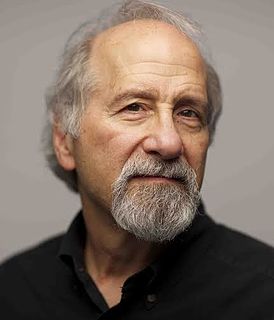
The Jardin des plantes, also known as the Jardin des plantes de Paris when distinguished from other jardins des plantes in other cities, is the main botanical garden in France. The term Jardin des plantes is the official name in the present day, but it is in fact an elliptical form of Jardin royal des plantes médicinales, which is related to the original purpose of the garden back in the 17th century.

Bernard-Germain-Étienne de La Ville-sur-Illon, comte de Lacépède or La Cépède was a French naturalist and an active freemason. He is known for his contribution to the Comte de Buffon's great work, the Histoire Naturelle.

The French National Museum of Natural History, known in French as the Muséum national d'histoire naturelle, is the national natural history museum of France and a grand établissement of higher education part of Sorbonne Universities. The main museum, with four galleries, is located in Paris, France, within the Jardin des Plantes on the left bank of the River Seine. It was formally founded in 1793 during the French Revolution, but was begun even earlier in 1635 as the royal garden of medicinal plants. The museum now has 14 sites throughout France.

Alphonse Milne-Edwards was a French mammalologist, ornithologist and carcinologist. He was English in origin, the son of Henri Milne-Edwards and grandson of Bryan Edwards, a Jamaican planter who settled at Bruges.

François Auguste Péron was a French naturalist and explorer.

Pierre-Justin-Marie Macquart was a French entomologist specialising in the study of Diptera. He worked on world species as well as European and described many new species.
Paramiacis is an extinct genus of Miacidae. Christian Mathis has defined to make a difference between the miacids from Europe and the American genus Miacis. There are two species of it, P. exilis and P. teilhardi - which were long believed to be only sexual dimorphism.

Theodore Wells Pietsch III is an American systematist and evolutionary biologist especially known for his studies of anglerfishes. Pietsch has described 72 species and 14 genera of fishes and published numerous scientific papers focusing on the relationships, evolutionary history, and functional morphology of teleosts, particularly deep-sea taxa. For this body of work, Pietsch was awarded the Robert H. Gibbs Jr. Memorial Award in Systematic Ichthyology by the American Society of Ichthyologists and Herpetologists in 2005. Pietsch has spent most of his career at the University of Washington in Seattle as a professor mentoring graduate students, teaching ichthyology to undergraduates, and curating the ichthyology collections of the UW Burke Museum of Natural History and Culture.

Antoine Nicolas Duchesne was a French botanist known for his keen observation of variation within species, and for demonstrating that species are not immutable, because mutations can occur. "As Duchesne's observations were unaided by knowledge of modern concepts of genetics and molecular biology, his insight was truly remarkable." His particular interests were in strawberries and gourds.

Elaeocyma is a genus of sea snails in the family Drilliidae.
Arganarhinus is an extinct genus of phytosaur known from the late Triassic period of Argana Basin in Morocco. It is known from a skull which is housed at the Muséum national d'Histoire naturelle. It was first named as a species of Paleorhinus in 1977b by J. M. Dutuit and it was named as a separate genus by Long and Murry in 1995 and the type species is Arganarhinus magnoculus. Its closest relative was Paleorhinus.
Bernard Renault was a French paleobotanist. He was a specialist in regard to the anatomy of Carboniferous and Permo-Carboniferous period flora.
Clavagella is a genus of marine bivalves in the family Clavagellidae.
Cyclocardia elegans is an extinct species of clam in the family Carditidae.

Elaeocyma plicata is an extinct species of sea snail, a marine gastropod mollusk in the family Drilliidae.
Elaeocyma citharella is an extinct species of sea snail, a marine gastropod mollusk in the family Drilliidae.
Elaeocyma subcostaria is an extinct species of sea snail, a marine gastropod mollusk in the family Drilliidae.
Digitolabrum is an extinct genus of sea snails in the family Aporrhaidae. Most species are from the Eocene of France. D. abedi and D. elegans are from the Eocene of Egypt.
André Aubréville was a French botanist, professor at the National Museum of Natural History in Paris and a member of the Academy of Sciences. He was the first scientist to introduce the term "desertification" (in his 1949 book: Climats, forêts et désertification de l'Afrique tropicale, and wrote a number of floras of former French colonies.
Nigeremys is an extinct genus of bothremydid pleurodiran turtle from Niger, Mali and Syria. The genus consists exclusively of type species N. gigantea.








